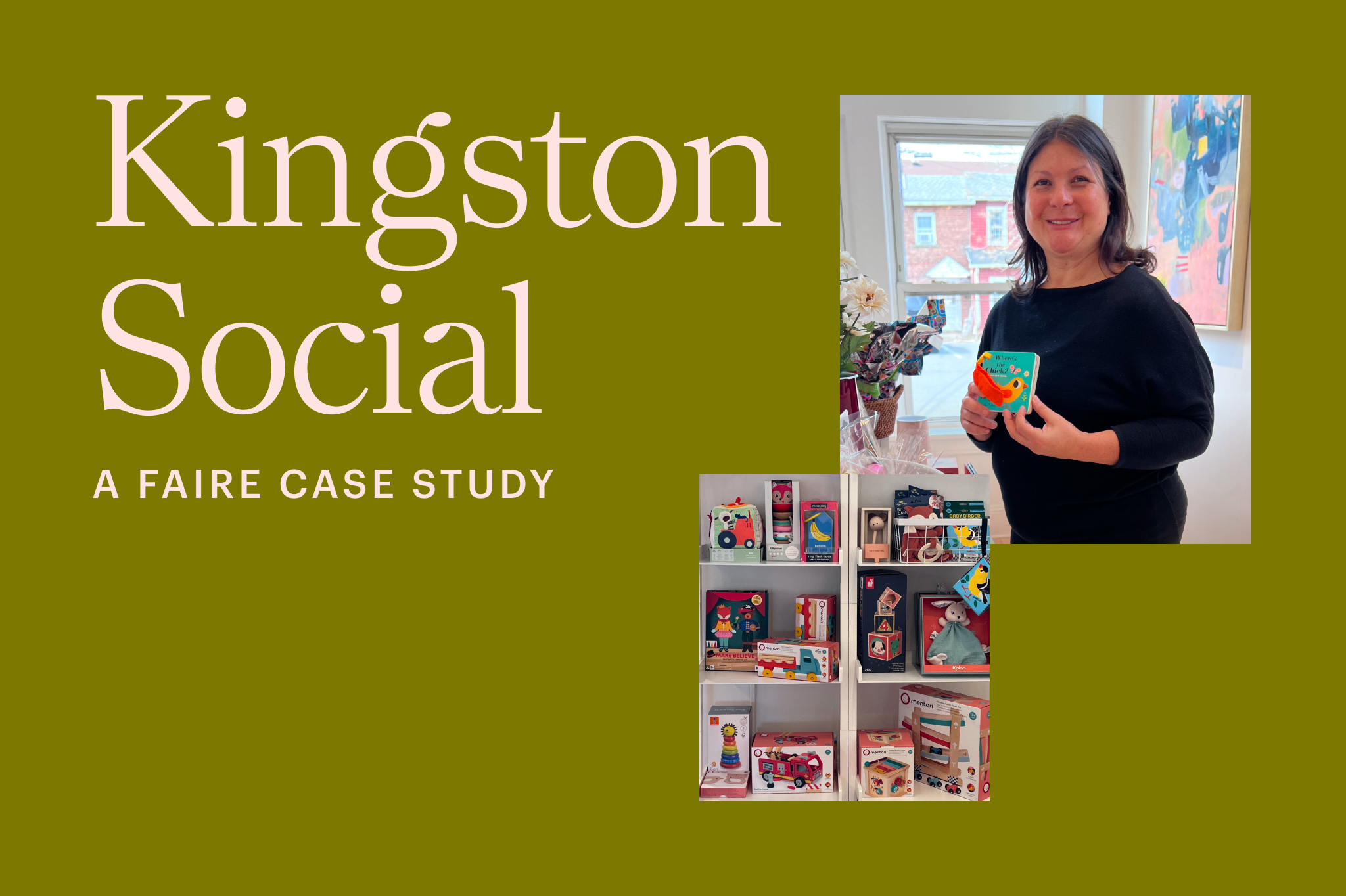

If you’ve ever wondered what your customers are really thinking, it might be time to implement a customer experience survey.
The answers to retail survey questions can provide invaluable insights into the thoughts, feelings, and behaviors of your customers. You can invite feedback about your store’s customer service, products, atmosphere, website, return policies, and more. After all, if you don’t know your shoppers’ pain points, how can you fix them? And on the flip side, knowing what’s really resonating with your customers can help inform where you invest your time and resources moving forward.
Customer satisfaction surveys can help you assess your place in the market and improve the way you do business. If you’re ready to start surveying, the following guide explains the benefits of retail surveys, the different kinds of metrics you can use to design your customer surveys, examples of questions you might ask, and best practices.
The benefits of retail customer surveys
Opening the floor to feedback, including negative feedback, can be daunting to some retailers. But a customer experience survey can be a hugely powerful tool in your arsenal. Here are some of the main benefits of asking shoppers to complete a customer survey:
- Spot trends and make changes. You can use survey questions to quickly identify negative themes, patterns, and trends in order to change them as soon as possible. This empowers you to improve your customers’ satisfaction based on facts rather than assumptions, but it also shows your customers that they are heard and valued.
- Gauge and improve customer loyalty. When customers are encouraged to share feedback, you can easily see how loyal they are and plan how you might improve retention in the future. If customers voice a desire for new products, you can start stocking certain items in response. Retailers often offer some kind of promotional discount or complimentary gift to customers who complete a survey as a thank-you for their time, effort, and honesty. This incentivizes them not only to answer but also to return to your store again.
- Tailor marketing campaigns to specific audience segments. You can use your customers’ opinions to customize email marketing campaigns for different segments of your audience. That way, your shoppers will only get newsletters that are relevant to their interests. Knowing what specific customer segments think can help you design more personalized email, online, and print marketing campaigns that delight and surprise those different groups.
- Gain an advantage over your competition. There’s a good chance that many of your competitors are not asking their customers to fill out surveys, which gives you an advantage when you do conduct surveys. You will be better prepared to adjust your product and service offerings to give your customers exactly what they want and need.
Types of customer satisfaction metrics
There are several ways to measure customer satisfaction, and they all depend on the kinds of questions you ask and how you structure your surveys. Here are four main types of customer satisfaction metrics that you might use in your next survey:
- Net Promoter Score (NPS): This type of metric is used to assess customers’ loyalty and how likely they are to recommend your store to others based on a numerical scale. You’ll ask questions like “How likely are you to recommend us,” and customers rank their answers on a scale of 1–10.
- Customer Satisfaction Score (CSAT): These questions give you feedback about how satisfied or dissatisfied your customers are with a product, a service, or the overall experience. CSAT questions also typically involve a 1–10 scale. You can pose a question in an email or pop-up after customers have signed up for your service or made a purchase, when you’ve added new features, or when you want to know how they feel about a specific facet of your business.
- Customer Effort Score (CES): One other type of metric that uses a numerical scale is the CES, which evaluates how much effort customers feel when interacting with your business. Your goal should be to create a seamless experience that feels as effortless as possible.
- Binary: This is the simplest type of metric because you can only answer yes or no. They’re often used because they’re so quick and easy for customers to complete. You can still learn whether your customers are satisfied with their purchase and whether they would consider recommending your business to someone else, but you will lose the nuance that numerical scales offer.
How to deliver retail customer surveys
How exactly do you get your survey in front of shoppers? Here are some common options:
Emails
Retailers often send out surveys via email after customers have made a purchase or signed up for a service. You might also consider sending out an email to your entire subscriber list for more general feedback. If you deliver surveys via email, always follow email marketing best practices like you would with any other campaign. Make sure to explain why they’re receiving the email, what you’re hoping to accomplish by conducting the survey, and about how long it will take.
In person
If you run a brick-and-mortar retail business, a basic paper survey can do the trick—just make sure to provide pens or pencils and a box to drop the completed surveys. You might consider offering some sort of incentive (which can be as simple and inexpensive as a free sticker) to those who complete the survey. Everyone loves a free gift!
On your website
The simplest way to serve a survey on your site is a pop-up box that appears after customers complete a purchase or sign-up process, depending on your goals. There are apps you can try if you aren’t sure how to build this functionality into your website.
Useful survey apps to consider
If you choose to conduct a survey online, digital tools and apps such as SurveyMonkey or Typeform can be incredibly helpful. SurveyMonkey offers all the tools you need to design and administer surveys via email, web link, website pop-up, social media, or an embedded link on your website. Typeform is another popular digital platform used to create surveys, apps, and more without any knowledge of coding necessary.
Retail survey question examples
If you need inspiration and examples, here are some common survey questions you might ask your customers. Notice that the language is neutral, the questions are not leading, and they are easy to understand.
- How likely are you to recommend our products/service to friends, family, or colleagues?
- How satisfied are you with our products/service/quality/value/etc.?
- How would you rate our knowledge/professionalism/ timeliness/ease of use/etc.?
- How easy did you find it to use our products/service/website?
- What do you like most about this product/service/experience?
- How can we improve our products/service/experience?
- Do you have any other suggestions or comments?
Best practices for a successful survey
Now that you have the basic tools to design and send out your survey, it’s time to write questions that will yield helpful results. Here are a few best practices to keep in mind so you can make the most of your retail survey campaigns:
- Make it easy! Surveys should be as quick and simple and frictionless as possible. Your questions should be straightforward, specific, and uncomplicated. It’s also easier to ask one or two questions at a time rather than asking customers to fill out a lengthy survey unless you plan on compensating them for their time.
- Prioritize clarity. Survey questions should be concise and have a clear purpose, such as identifying challenges that you plan on fixing or gauging customer satisfaction. There’s no point in asking questions that won’t yield useful answers, so don’t include filler questions in any survey.
- Use scales or rating systems. A simple rating system or a scale of 1–10 is the easiest and most straightforward way for customers to provide feedback and data. Questions that are limited to a yes or no answer can be useful when you’re looking for a specific response.
- Avoid leading questions. Your tone and word choice should be neutral and unbiased without any assumptions, emotional language, or value statements about your business.
- Send surveys right after purchases. If you’re planning on asking customers to complete a survey about a recent purchase, make sure to send it as soon as possible rather than weeks or months later. You can include multiple types of questions using whichever metrics you choose about product quality, buying experience, or challenges they encountered—but remember to strike while the iron is hot!




